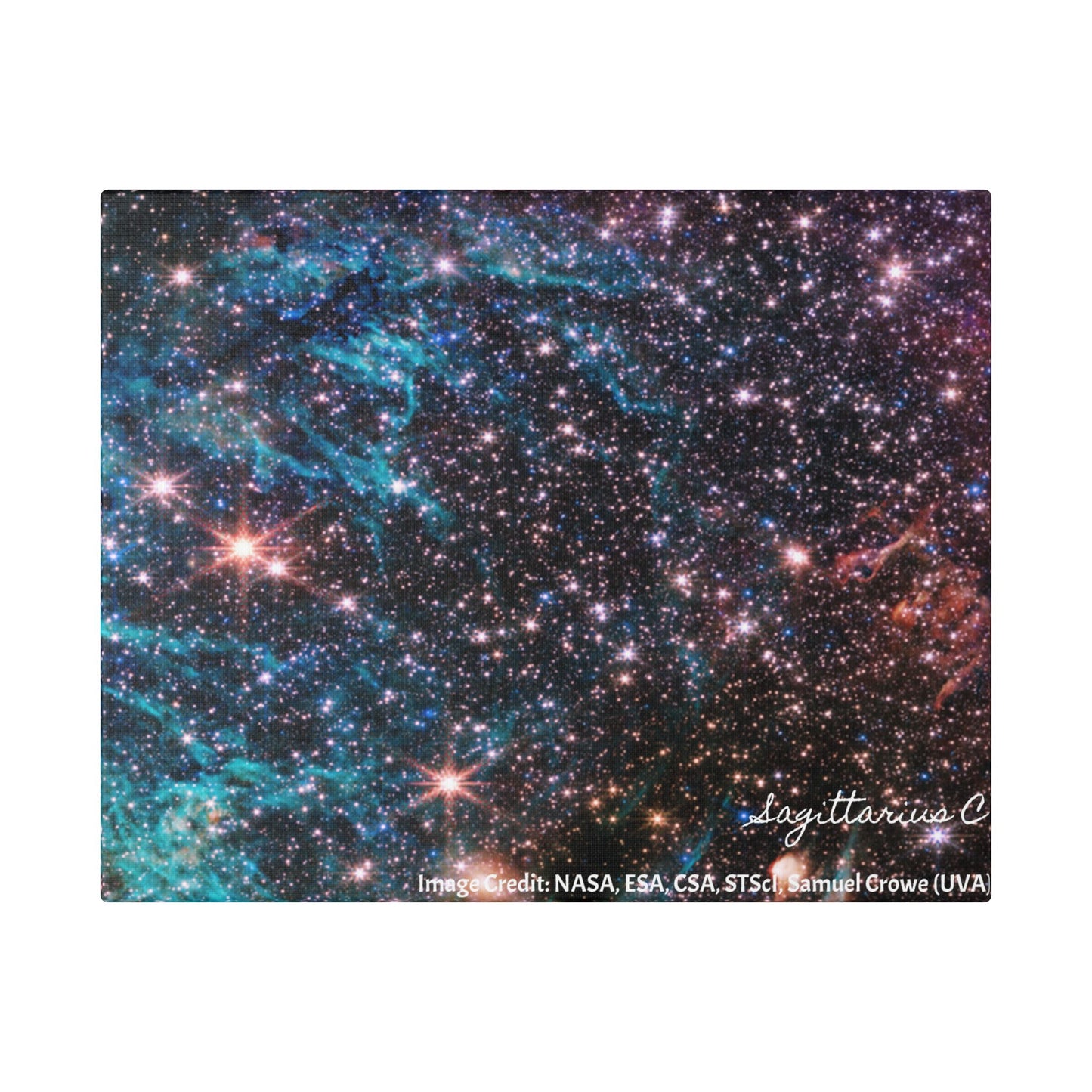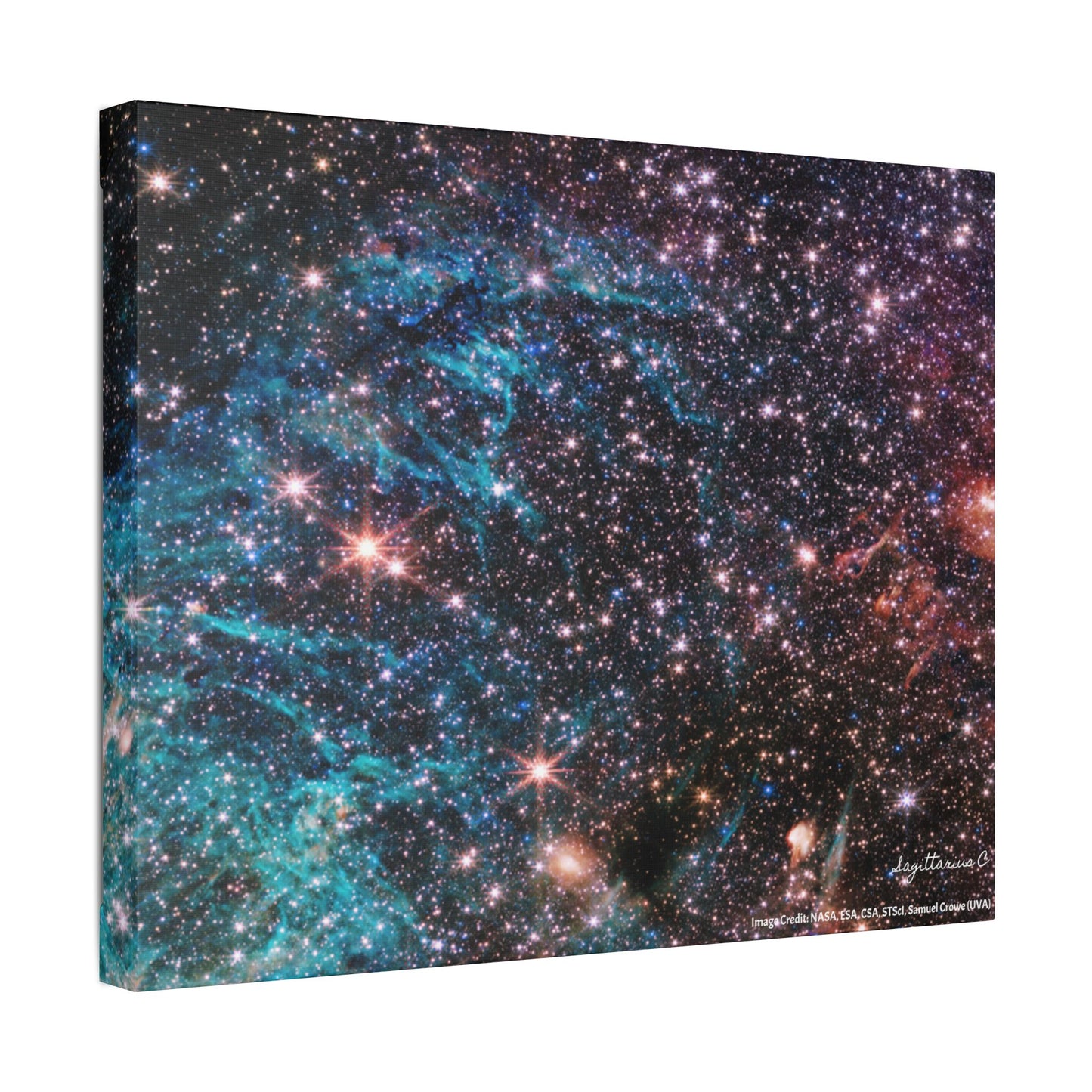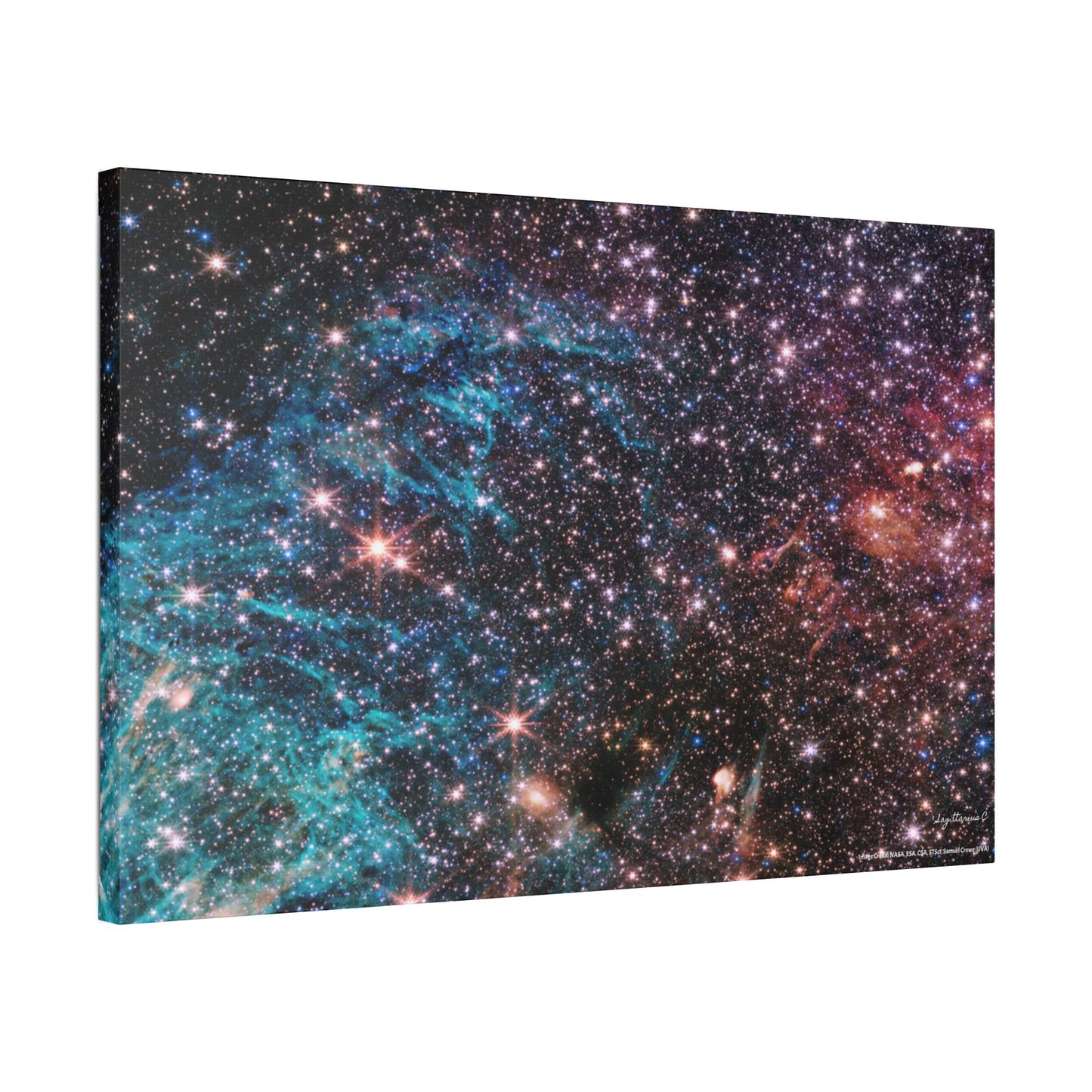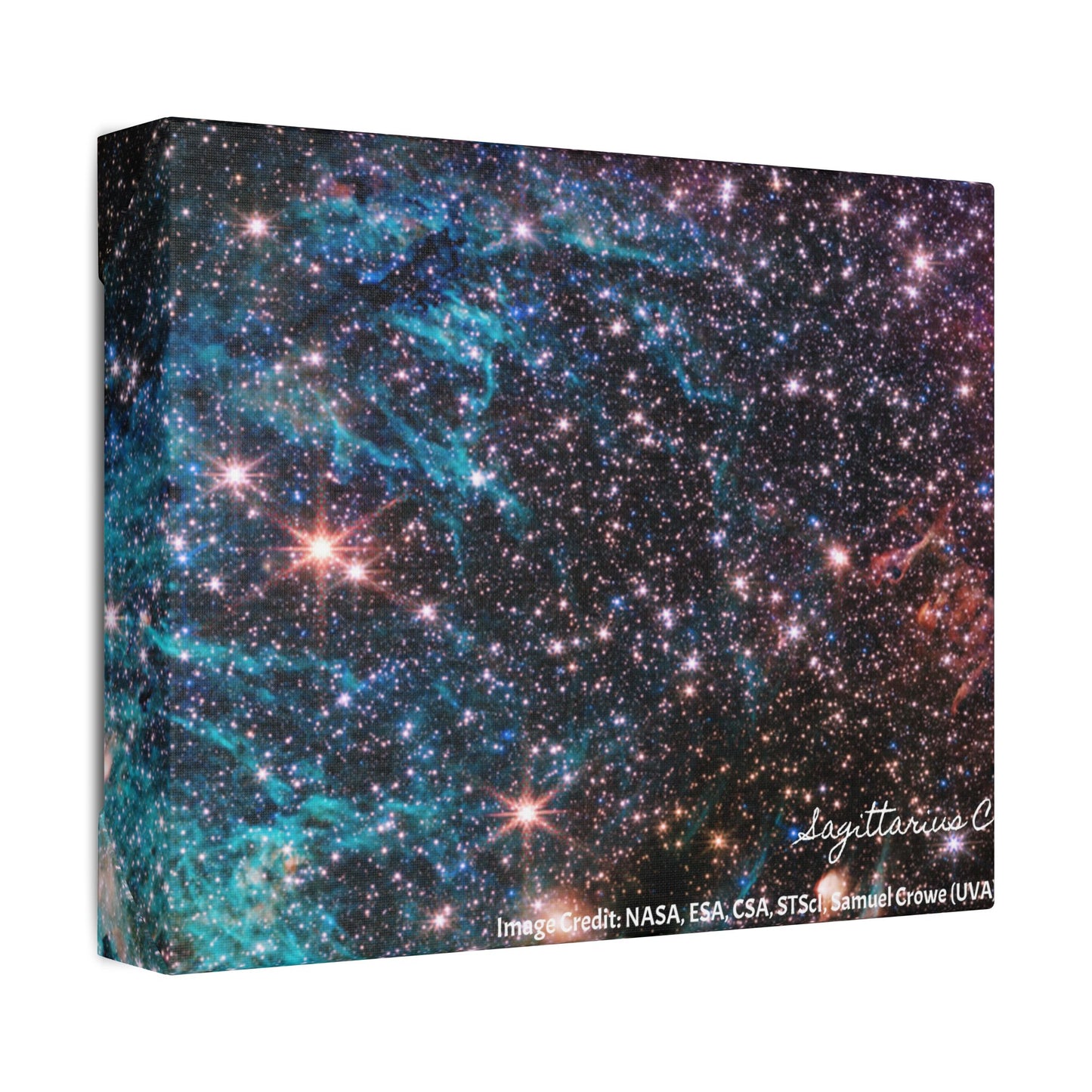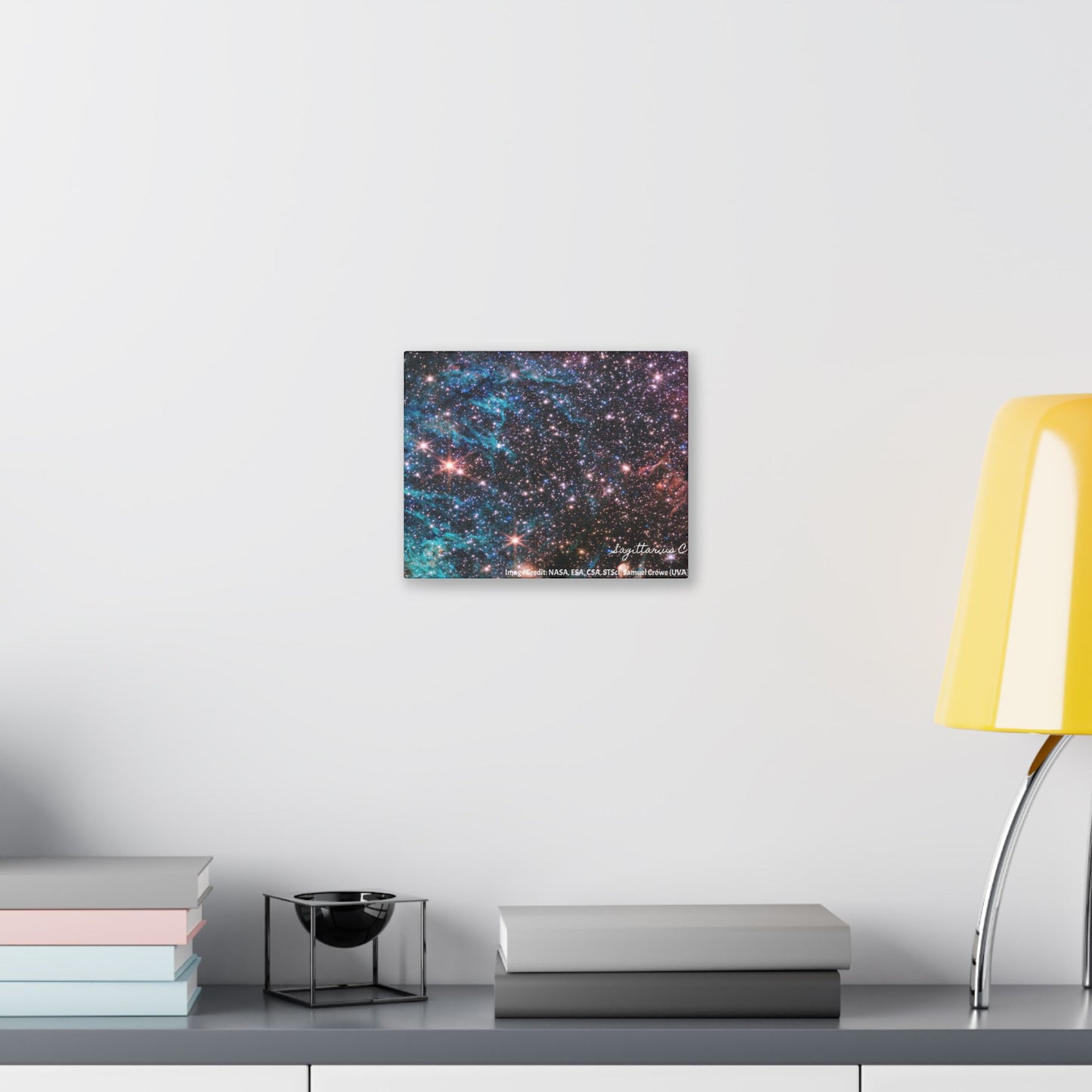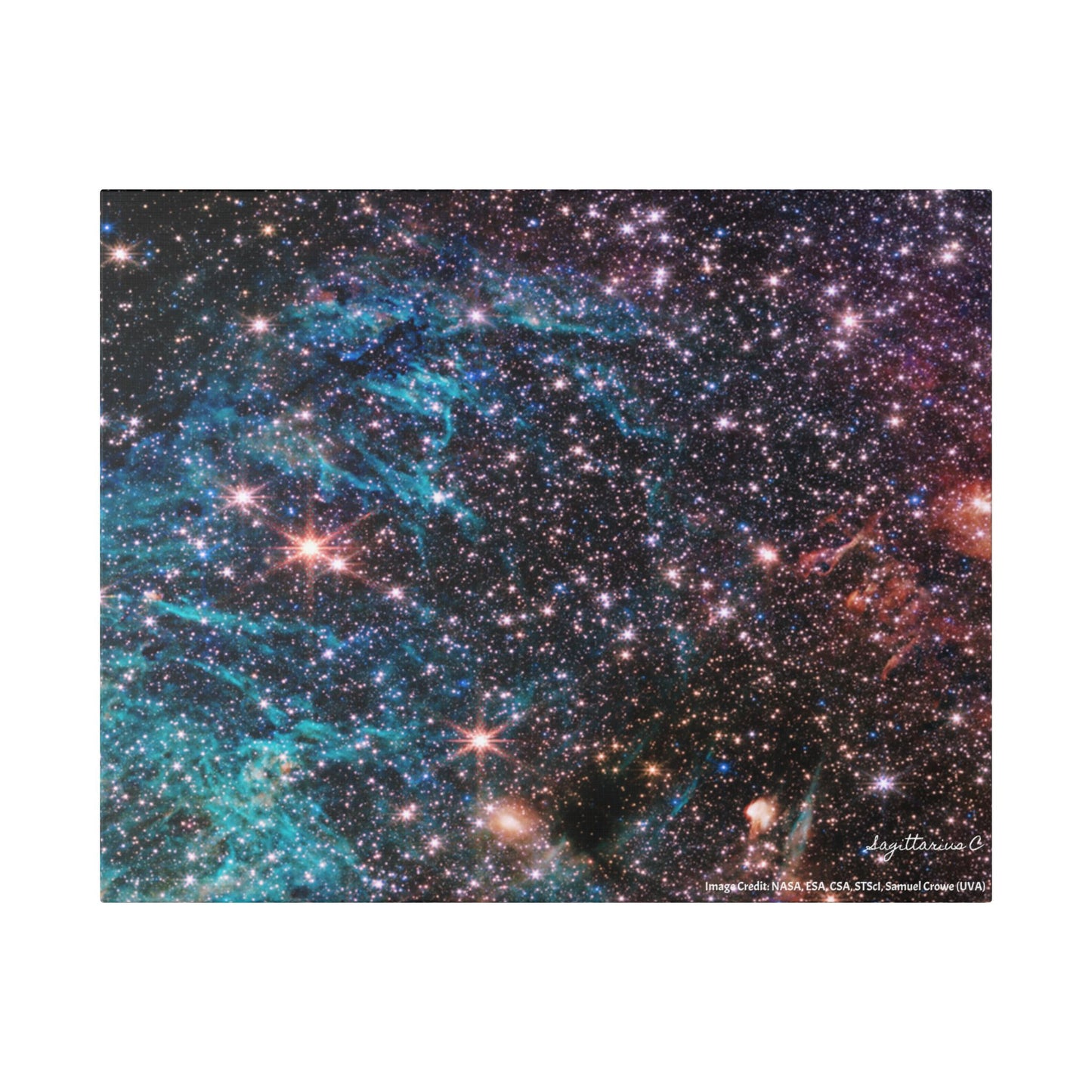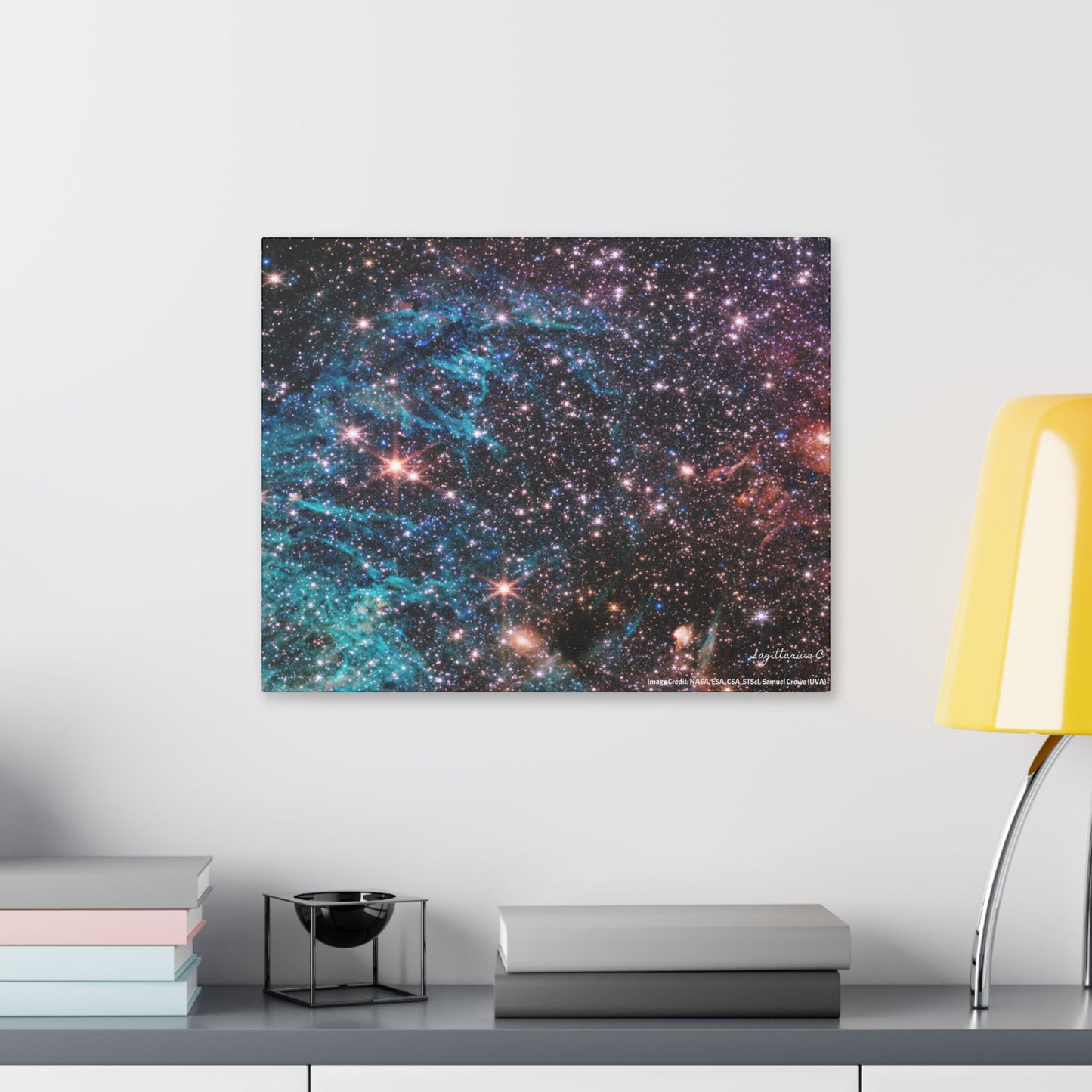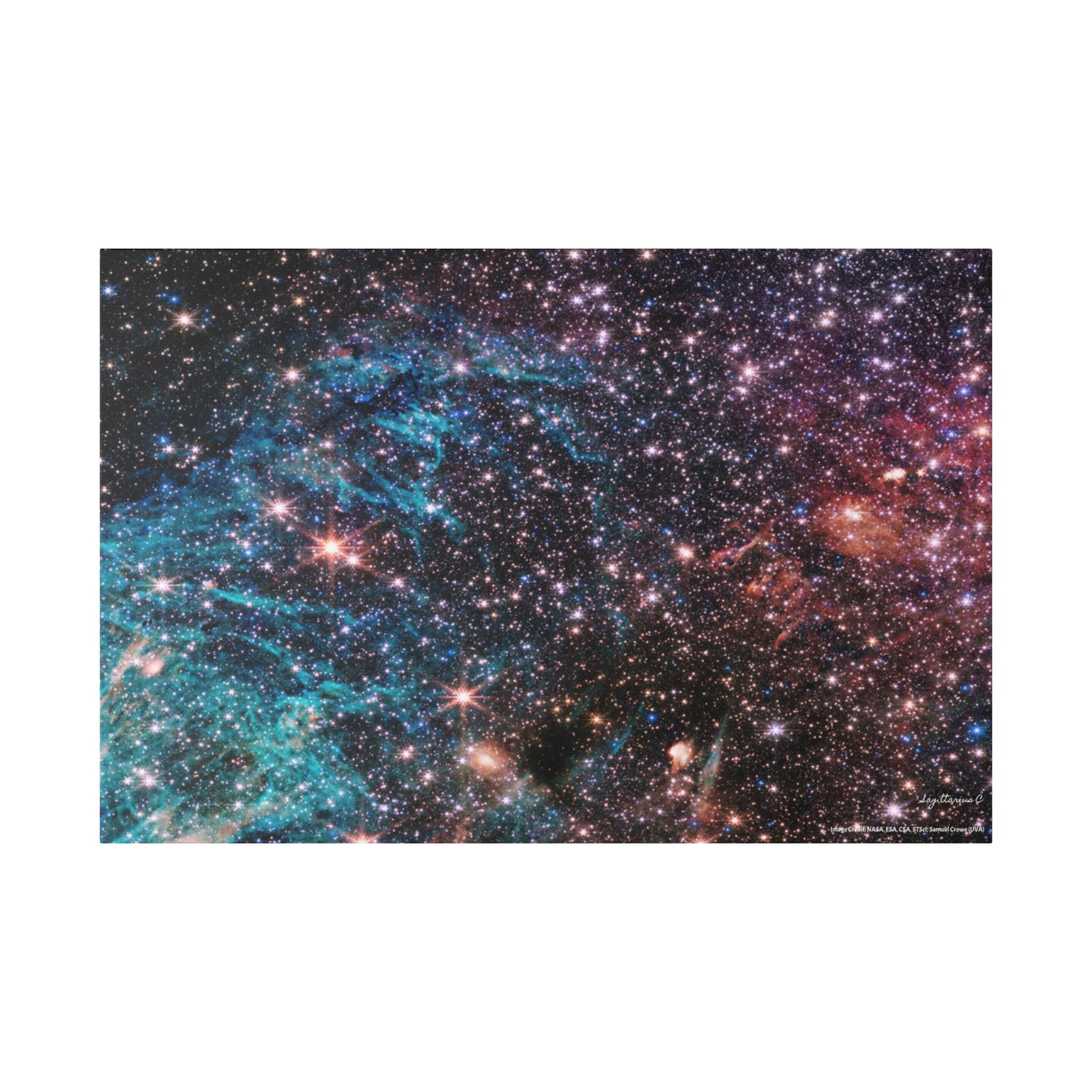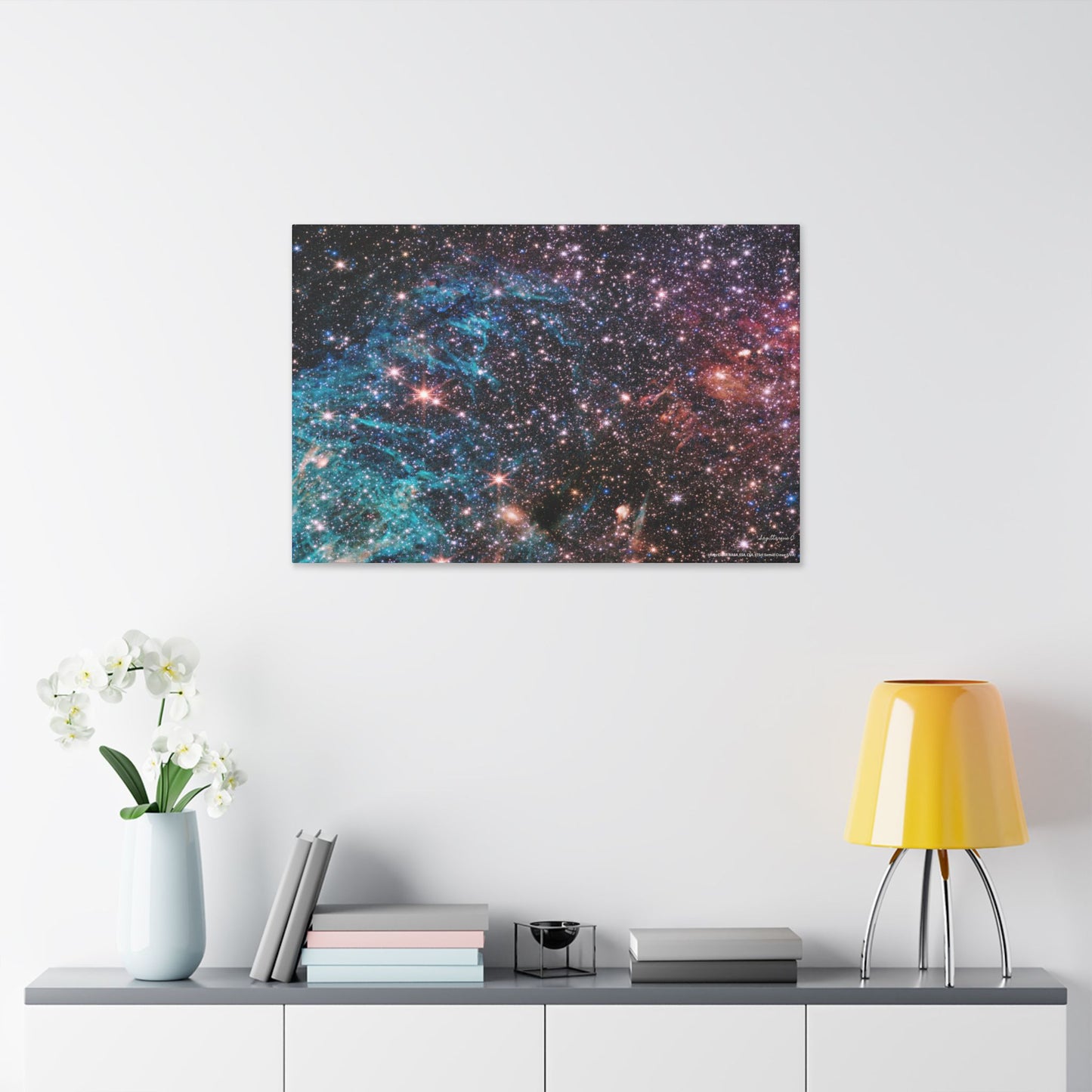Sagittarius C, Canvas Wall Art
Sagittarius C, Canvas Wall Art
Couldn't load pickup availability
Elevate Your Space with Quality Canvas Art
Transform your home or office into a sophisticated haven with our stunning collection of canvas art prints. Each piece is meticulously crafted using top-tier materials and cutting-edge printing techniques to deliver exceptional clarity, detail, and vibrancy.
Please note that these canvas art prints are created for exquisite indoor display.
Invest in lasting beauty. Shop for our canvas art collection today.
Sagittarius C:
The full view of the James Webb Space Telescope’s NIRCam (Near-Infrared Camera) instrument reveals a 50 light-years-wide portion of the Milky Way’s dense center. An estimated 500,000 stars shine in this image of the Sagittarius C (Sgr C) region, along with some as-yet unidentified features.
A vast region of ionized hydrogen, shown in cyan, wraps around an infrared-dark cloud, which is so dense that it blocks the light from distant stars behind it. Intriguing needle-like structures in the ionized hydrogen emission lack any uniform orientation. Researchers note the surprising extent of the ionized region, which spans approximately 25 light-years.
A cluster of protostars – stars that are still forming and gaining mass – is producing outflows that glow like a bonfire at the base of the large infrared-dark cloud, indicating that they are emerging from the cloud’s protective cocoon and will soon join the ranks of the more mature stars around them. Smaller infrared-dark clouds dot the scene, appearing like holes in the starfield.
Researchers say they have only begun to explore the wealth of unprecedented high-resolution data that Webb has provided on this region, and many features warrant detailed study. This includes the rose-colored clouds on the right side of the image, which have never been seen in such detail.
Constellation: Sagittarius
Dimensions: This image is about 5.8 arcminutes across (44 light-years)
Distance: 26,000 light-years
Exposure Dates: 22 Sept 2023
Image Credit: NASA, ESA, CSA, STScI, Samuel Crowe (UVA)
Share
